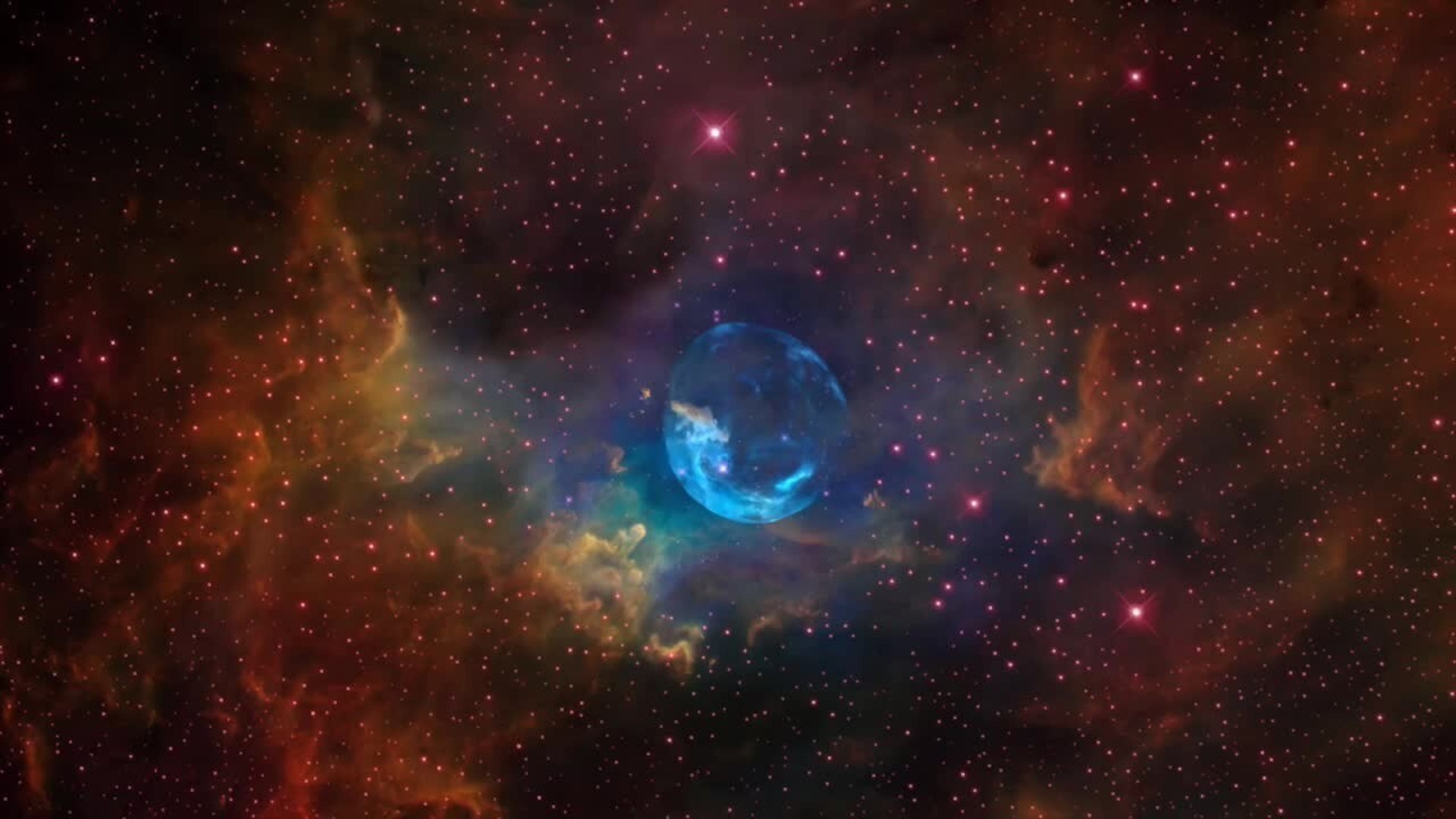Cosmic 'superbubbles' might be throwing entire galaxies into chaos, theoretical study hints
When there are multiple supernovas in the same galaxy, they can leave enormous voids that tamper with the balance between dark matter and regular matter. Over time, this can throw entire galaxies into chaos.

The worlds of dark matter and regular matter connect only through their gravity — and astronomers hope that giant cavities in space known as "superbubbles" might hold the key to understanding that connection.
Our galaxy, like almost all others, is filled with an invisible substance known as dark matter. There is a wealth of evidence for dark matter — however, the exact nature of the elusive substance remains a cosmic mystery.
Astronomers desperately want to identify dark matter, and one way they can understand more about it is by observing its gravitational influence on normal matter. But galaxies are complex, busy places, with all sorts of interactions, events and energetic explosions happening all the time — so it's difficult to separate dark matter's influence from the normal behavior of regular matter.
Now, astronomers at the University of Tartu in Estonia may have found a clever connection point: superbubbles.
As described in their recent paper submitted to the journal Astronomy & Astrophysics for peer review and publication, superbubbles are giant cavities that powerful stellar explosions called supernovas carve out of the interstellar medium — the loose bits of charged particles and dust that drift between stars.
It takes more than one supernova to make a superbubble, but giant stars are often born together in large clusters. They tend to have similar life spans, and they also tend to explode together at the ends of their lives. When multiple supernovas go off, their blast waves create a high-density region within the interstellar medium stretching up to thousands of light-years across — a superbubble.
Sign up for the Live Science daily newsletter now
Get the world’s most fascinating discoveries delivered straight to your inbox.
Because a superbubble has a slightly lower density than its surroundings, it creates tiny gravitational differences in the regions around it. Using simulations of superbubbles and their environments, the researchers discovered that the gravitational differences within the superbubbles influence both the stars and the dark matter that passes through them, acting as a source of friction that slows the rate of rotation of both kinds of matter.
The researchers found that the presence of superbubbles can affect the overall rotation rate of stars and galaxies by about 4% per billion years. Over the lifetime of a galaxy, that can mean sapping about half of the total rotational energy of a galaxy, greatly affecting the orbits of both stars and dark matter.
But the superbubbles affect the dark matter and the stars in different ways. The superbubbles slow down the dark matter but not as much as the stars — which creates a disconnect in their evolution. The properties of dark matter inside galaxies — most importantly, its rotational energy — also change in response to the superbubble friction, which, in turn, influences the gravitational connection between dark matter and normal matter in ways that could potentially be detectable.
This is an intriguing clue. While their results are based only on simulations, the researchers think future studies will better reveal how superbubbles can be used to disentangle the relationship between dark matter and normal matter. This will ultimately allow astronomers to map the positions and velocities of stars near superbubbles to look for signs of how the underlying dark matter is behaving.

Paul M. Sutter is a research professor in astrophysics at SUNY Stony Brook University and the Flatiron Institute in New York City. He regularly appears on TV and podcasts, including "Ask a Spaceman." He is the author of two books, "Your Place in the Universe" and "How to Die in Space," and is a regular contributor to Space.com, Live Science, and more. Paul received his PhD in Physics from the University of Illinois at Urbana-Champaign in 2011, and spent three years at the Paris Institute of Astrophysics, followed by a research fellowship in Trieste, Italy.









